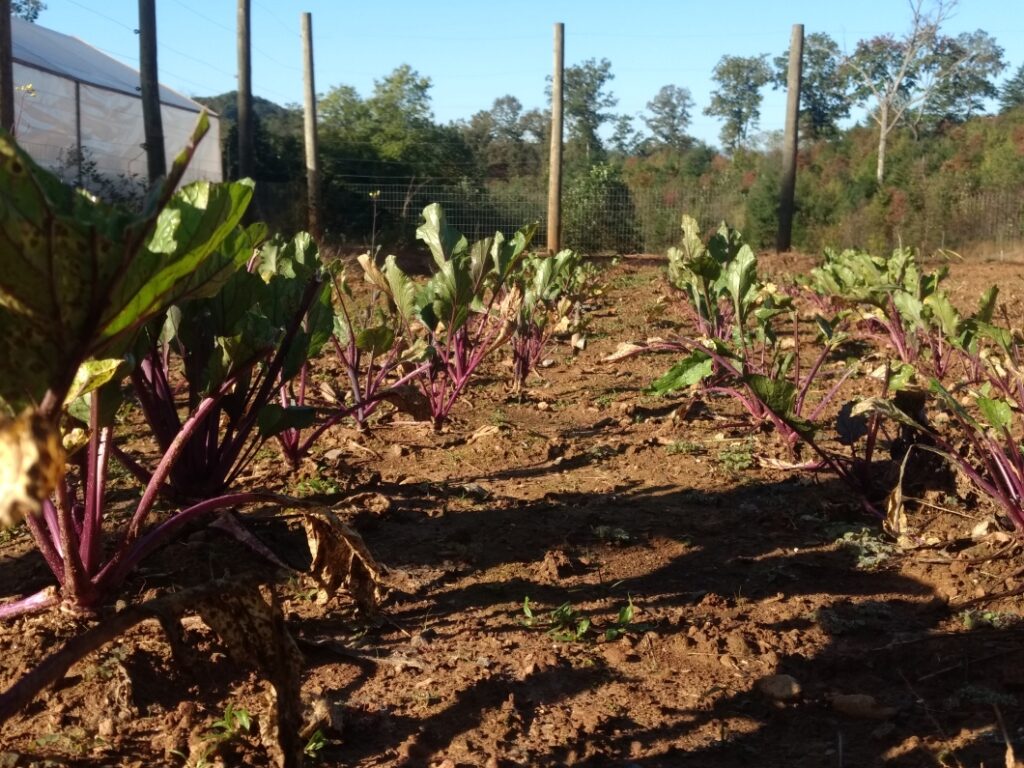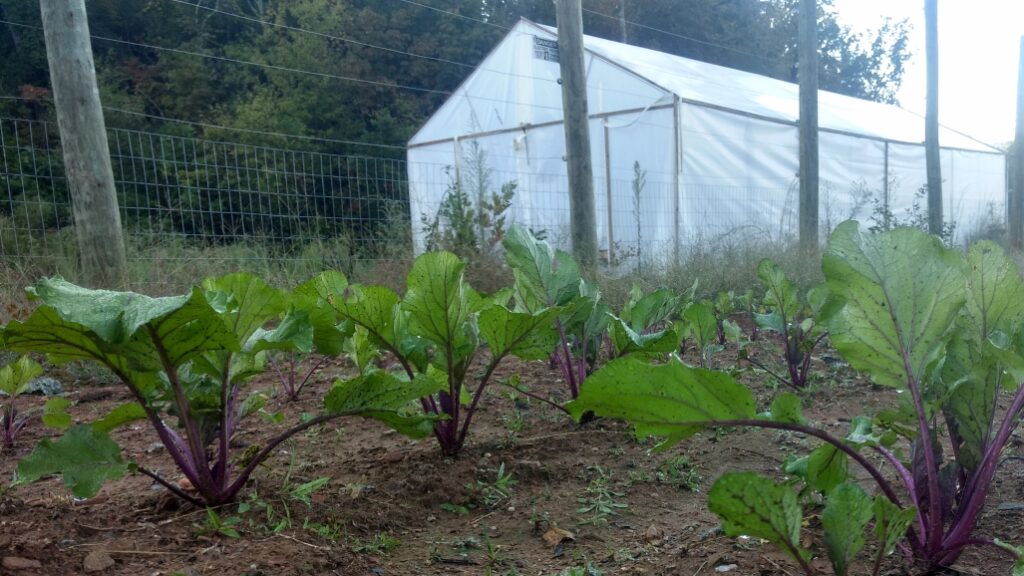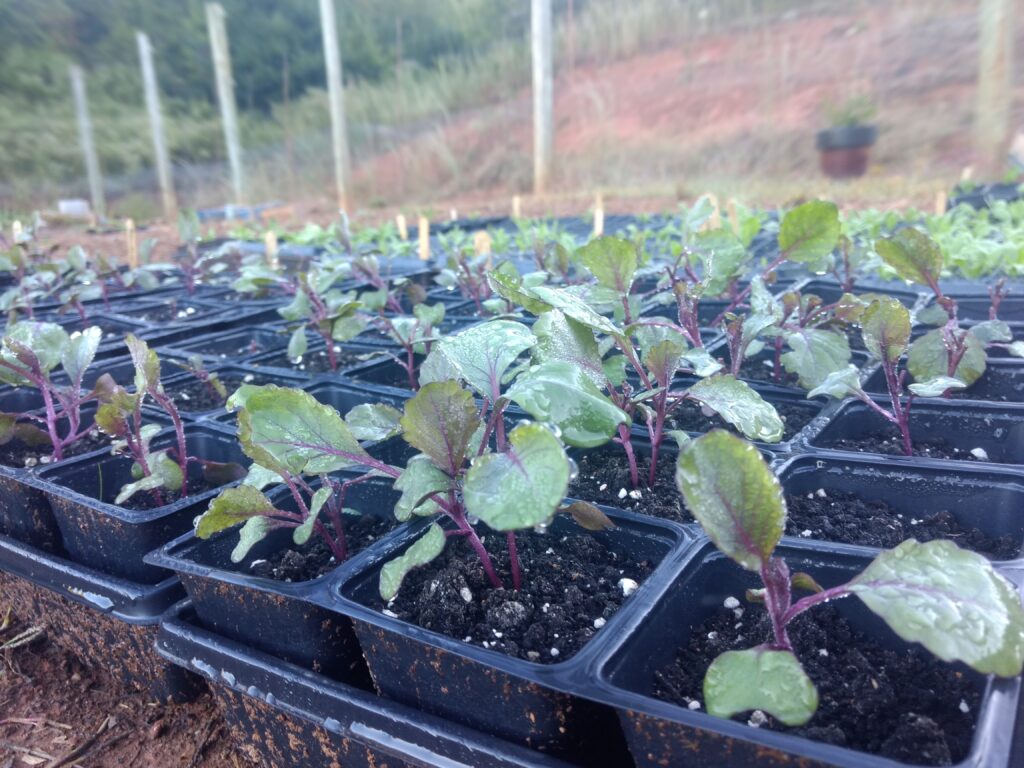
Project Harvest Fall Garden

By Amber Camacho
With the crisp air and falling leaves, it’s clearly fall around here. Bundled up in our Project Chimps hoodies and clump-clumping along in our boots, we trek out to water the babies. I don’t mean the chimps but our well cared-for seedlings in Project Harvest (and sometimes the bees too) in the fall garden. First, the peach tree seedlings get their water, then the hundreds of spinach, red cabbage, and Asian greens seedlings receive theirs.
What’s Growing in the Fall Garden?

Hon tsai tai, Tatsoi, and Mizuna greens may be tasty for stir fry, but they’ll be a unique and fun, green flavor for the chimps in the coming fall to winter months. We’ve also scattered mustard green seeds on our second and third garden terraces, exponentially increasing greens output for the season. While our fall garden won’t produce the 500+ lbs our summer garden produced, it is a sure way to ensure the chimps always have access to fresh food, especially in consideration of recent issues with local and global supply chains.
Baby Peach Trees!
In addition to our fall garden, we are caring for 24 donated peach tree saplings. They came to us recently, so tiny, needing lots of water and care. Planted in late summer, they’re barely taking root after their planting and soon the cold will take a deep hold. How will we care for such delicate seedlings through the winter? It’s simple. We’ll create meticulously cared for miniature greenhouses! Using plastic bottles surrounded with mulch, we’re able to capture heat, preventing frost and cold damage.

Garden Planning
So, what goes into our seasonal garden planning? We consider the fruits and vegetables we have access to via food trucks seasonally and what we can grow ourselves—this involves what the chimps prefer and need in conjunction with an analysis of what we can grow for cheaper (or sometimes free) than purchasing, as well as what stores sell. We communicate with our local extension office and master gardeners about soil samples and take their advice to ensure our garden produces enough high-quality produce for each chimp.
Our Project Harvest garden contributes to the organization’s over-all goals:
- Integrate programs that utilize the areas of the property not designated for chimpanzee care. (Plant a garden in an unused space.)
- Create an organizational culture of fiscal responsibility. (Install fencing to protect garden, carefully store seeds and tools.)
- Maintain positive awareness of Project Chimps within the community to support sanctuary operations. (Coordinate with local extension office and local master gardeners.)
- Expand organizational capacity through capital investments and strategic volunteer engagement. (Decrease long-term food costs with garden investment and volunteer efforts.)
We had a great time planting this fall, and with the efforts of our staff, volunteers, knowledgeable experts, and the gracious donations received, we have a thriving garden ready to explode with leafy greens.
Come get involved! Project Harvest is a great opportunity for families to volunteer together to help grow produce to feed the chimps. Apply here today.
